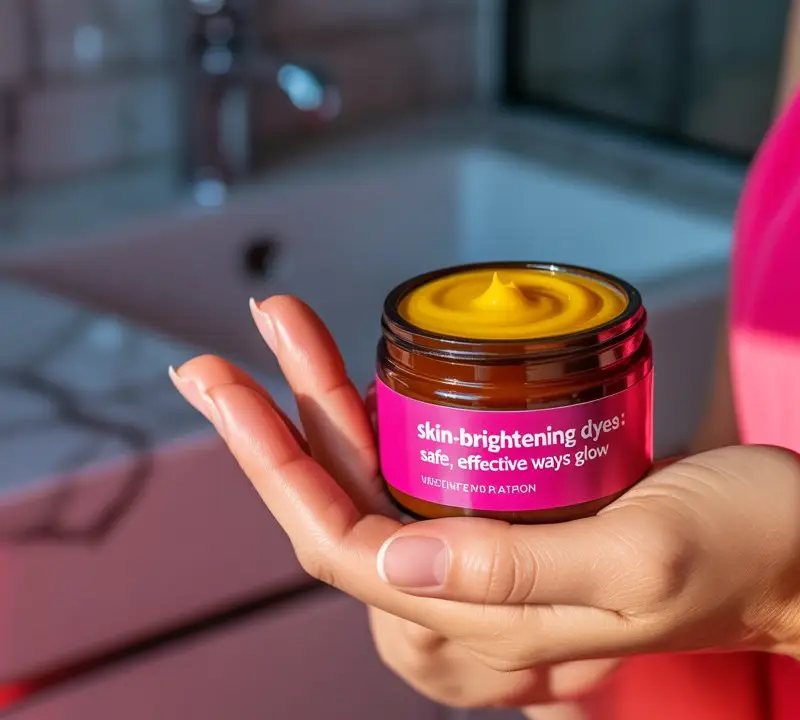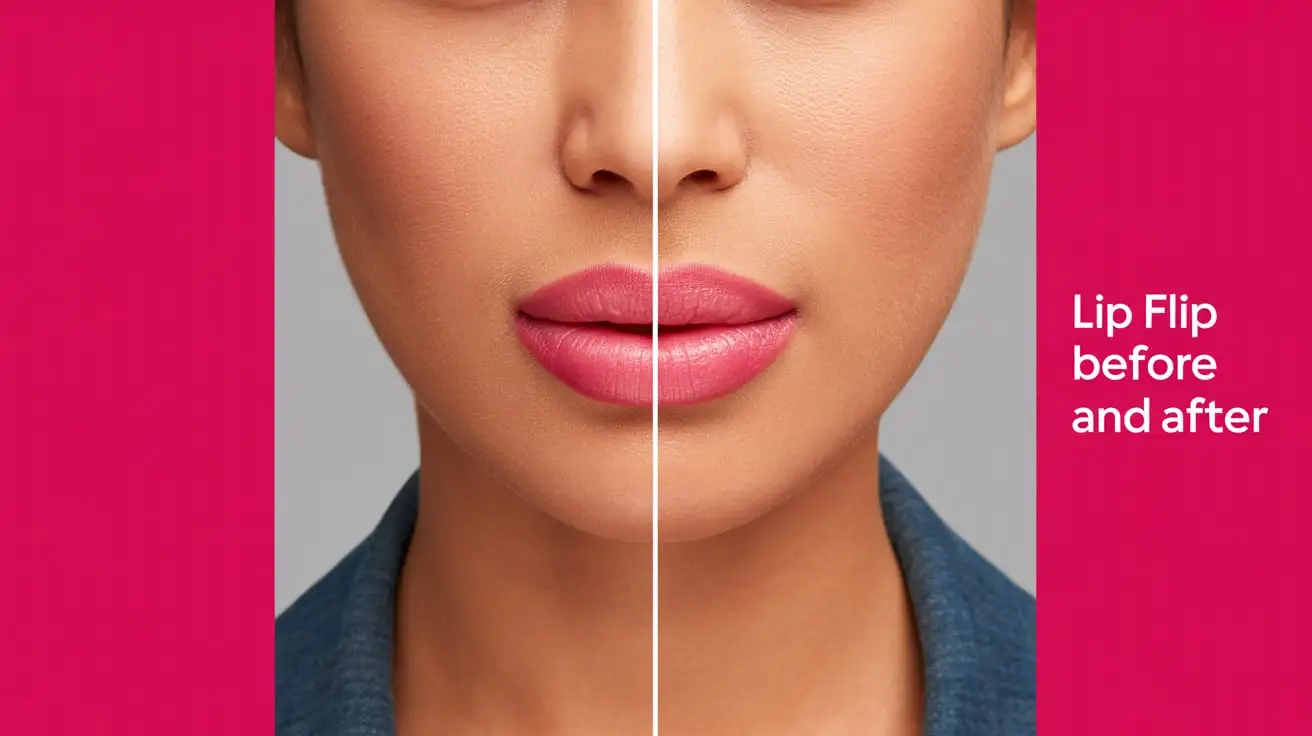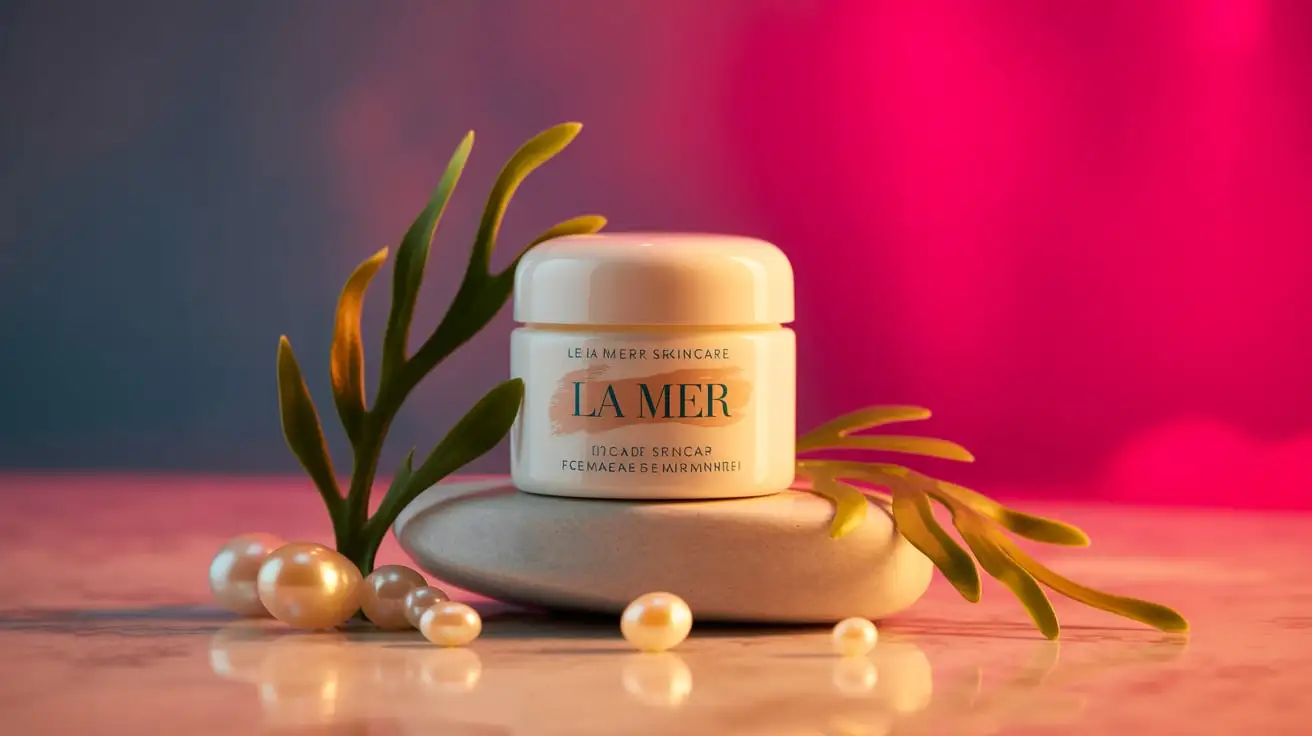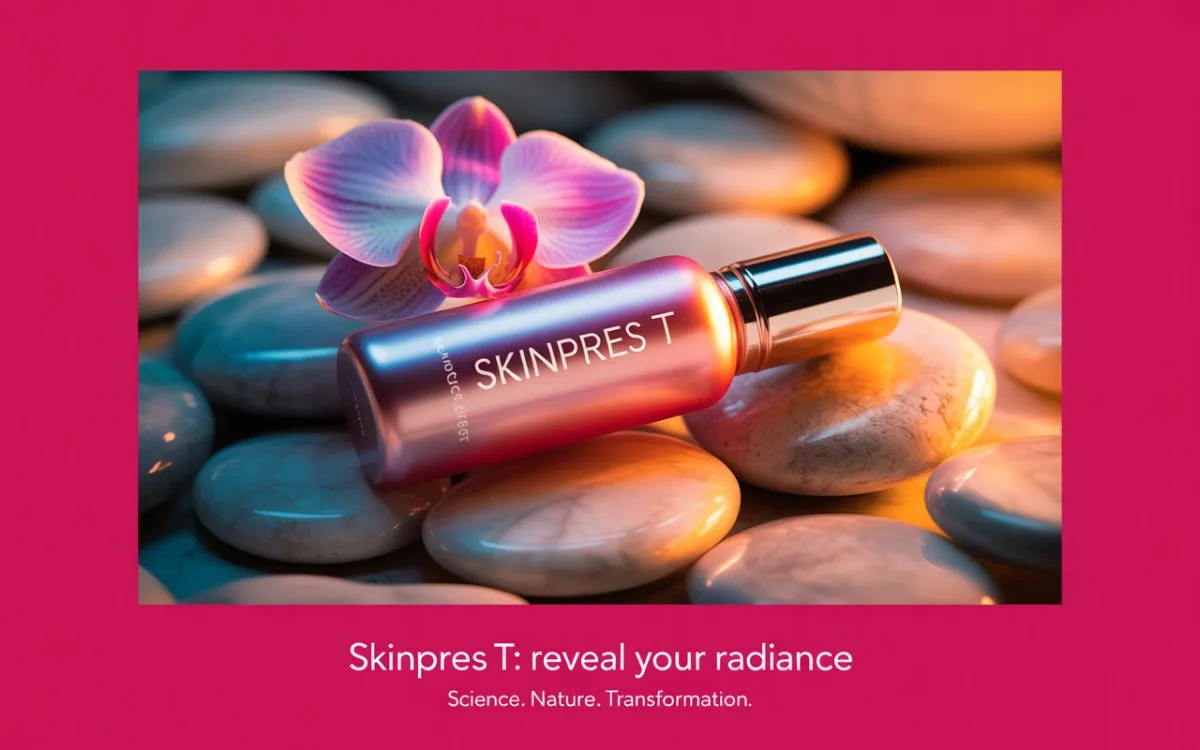
In the ever-evolving world of skincare, skin-brightening dyes have gained widespread attention for their ability to enhance complexion and promote a radiant glow. These formulations are designed to even out skin tone, reduce dullness, and restore vibrancy, making them a popular choice among individuals seeking a healthy, luminous appearance.
Table of Contents
ToggleHowever, with a growing number of products available on the market, it’s crucial to prioritize safe and effective options that truly benefit the skin without causing harm. Not all skin-brightening solutions are created equal; some may contain harsh chemicals or synthetic additives that lead to irritation or long-term damage.
This guide is tailored for beauty enthusiasts, skincare lovers, and DIY natural beauty users who are passionate about nourishing their skin while achieving visible results. Whether you’re exploring organic alternatives or seeking dermatologist-approved solutions, understanding the science and safety behind these products can help you make informed decisions.
What Are Skin-Brightening Dyes?
Skin-brightening dyes are specialized ingredients used in skincare products to enhance the skin’s natural tone, reduce the appearance of dark spots, and promote a more even, luminous complexion. Unlike chemical bleaches or harsh lightening agents, these dyes are formulated to subtly improve skin radiance without stripping away melanin or damaging the skin barrier.
How They Differ from Chemical Bleaches or Lighteners
Chemical bleaches and lighteners work by aggressively suppressing melanin production or removing the pigment entirely, often leading to sensitivity, irritation, or long-term skin damage. In contrast, skin-brightening dyes operate more gently by interacting with surface-level pigments and reflecting light in a way that gives the skin a brighter and more refreshed appearance. Rather than altering your natural tone, they enhance it.
Types of Skin-Brightening Dyes: Natural vs. Synthetic
- Natural Dyes: Derived from plant-based sources like turmeric, saffron, licorice root, or mulberry extract, these contain antioxidants and skin-loving nutrients. They’re often used by those who prefer clean beauty or DIY skincare approaches. Natural skin brighteners offer a safer, holistic way to improve your glow over time.
- Synthetic Dyes: Laboratory-formulated ingredients designed to mimic or enhance natural brightening effects. They may include encapsulated vitamins or advanced peptides that provide immediate visual enhancement. While effective, they must be used carefully to avoid sensitivity, especially for delicate or acne-prone skin.
Interaction with Skin Pigments
Skin-brightening dyes don’t bleach the skin; rather, they interact with melanin and other pigments by altering how light is absorbed and reflected on the skin’s surface. Some dyes may reduce oxidative stress or inflammation that causes hyperpigmentation, while others enhance the skin’s clarity by improving circulation or boosting cellular turnover.
Whether you’re choosing a natural or synthetic skin-brightening product, understanding these mechanisms can help you pick a product that is both safe and suitable for your skin’s unique needs.
Benefits of Using Skin-Brightening Dyes
Incorporating skin-brightening dyes into your skincare routine can deliver noticeable improvements in your complexion without resorting to invasive treatments or harsh chemicals. These innovative ingredients are designed to work with your skin’s natural biology, helping you achieve a healthier and more radiant appearance over time. Here are some key benefits:
1. Enhancing Natural Glow
One of the primary advantages of using a skin-brightening product is its ability to enhance your skin’s natural luminosity. By interacting with the surface pigments and improving light reflection, these dyes create an instant brightening effect that gives your face a refreshed, dewy look. Unlike makeup, this glow comes from improved skin clarity and vitality, not coverage.
2. Evening Out Skin Tone
Uneven skin tone caused by sun exposure, hormonal changes, or post-acne marks can be frustrating. Skin-brightening dyes target localized discoloration and promote a balanced complexion by supporting healthy pigment distribution. Regular use of a Skin Brighter can help fade dark spots and minimize redness, resulting in smoother, more uniform skin.
3. Reducing Dullness and Hyperpigmentation
Environmental stressors like pollution, UV damage, and fatigue can leave your skin looking dull and tired. Skin-brightening dyes work by revitalizing the outermost skin layer, promoting cellular renewal, and reducing oxidative buildup that contributes to a lifeless appearance. Many dyes also contain antioxidants that help combat hyperpigmentation, bringing back your skin’s youthful glow.
Top Natural Dyes That Brighten Skin
For those who prefer clean beauty or DIY skincare, natural dyes are a gentle and effective way to enhance your complexion. These plant-based ingredients not only add subtle color but also offer therapeutic benefits that support healthier, more radiant skin. Below are some of the most powerful natural Skin brighteners used in skincare routines around the world:
Turmeric – Rich in Curcumin for Anti-Inflammatory and Glow-Boosting Properties
Turmeric is a golden-hued spice celebrated for centuries in Ayurvedic skincare. Its active compound, curcumin, has strong anti-inflammatory and antioxidant effects, which help calm irritated skin and reduce blemishes. Turmeric also improves blood circulation, resulting in a natural, lit-from-within glow, making it a beloved skin-brightener for both traditional and modern users.
Saffron – Known for Radiant Skin Effects
Saffron is one of the most luxurious natural skin brighteners. Rich in vitamins and minerals, it improves skin tone, reduces pigmentation, and enhances overall brightness. Saffron is often used in face masks and serums aimed at restoring dull or tired-looking skin. With regular use, it can contribute to a soft, radiant complexion without irritation.
Beetroot – Natural Tint with Antioxidants
Beetroot contains betalains, powerful antioxidants that combat free radicals and support healthy skin cells. Its vibrant red color offers a natural flush while improving skin clarity and hydration. It’s commonly used in DIY masks and lip/cheek tints, making it a multipurpose skin-brightener with both cosmetic and skincare benefits.
Licorice Root Extract – Reduces Dark Spots
Licorice root extract is a well-researched natural brightener that helps reduce the appearance of dark spots and hyperpigmentation. It contains glabridin, a compound that inhibits melanin production without damaging the skin. Licorice root is ideal for those with sensitive skin seeking a non-irritating yet effective skin-brightening alternative.
Mulberry Extract – Helps Inhibit Melanin Production
Mulberry extract is packed with phenolic flavonoids that help reduce melanin activity, making it effective against uneven skin tone and age spots. It also provides antioxidant protection and supports skin elasticity. As a skin-brightening mulberry is often included in serums and creams designed to improve skin clarity
Synthetic Dyes and Their Role in Skin Brightening
While natural ingredients are widely celebrated, synthetic dyes also play a significant role in modern skincare, especially in products designed for instant brightness and cosmetic enhancement. These scientifically formulated colorants are carefully regulated and used to give products a uniform appearance, add visual appeal, and enhance the look of the skin by reflecting light. When used properly, they can be a safe and effective component of a well-formulated Skin Brighter product.
Commonly Used Cosmetic Dyes in Creams and Serums
Synthetic dyes such as Red 33, Yellow 5 (Tartrazine), and Blue 1 are frequently found in brightening creams, serums, and lotions. These dyes are used in micro-quantities to tint products and sometimes to subtly even out skin tone by counteracting discoloration. In tinted moisturizers or glow-enhancing serums, these dyes create a soft-focus effect that instantly improves the skin’s visual tone.
Other examples include:
- Iron oxides – Used in tinted skincare to provide natural-looking coverage and color correction
- Titanium dioxide and mica – Not traditional dyes but often paired with them for their light-reflecting properties that boost skin brightness
FDA-Approved Colorants (with Safety Data)
The U.S. Food and Drug Administration (FDA) regulates the use of synthetic colorants in cosmetics and skincare. Each approved dye is tested for toxicity, absorption, and long-term safety. Only certified color additives are allowed for use on the skin, and many undergo rigorous quality checks to ensure they’re free from heavy metals and other contaminants.
For example:
- FD&C dyes (Food, Drug, and Cosmetic dyes) are approved for topical use
- D&C dyes (Drug and Cosmetic dyes) are allowed in topical applications but not in food
Consumers should always check for FDA certification or similar regulatory approval when choosing synthetic-based Skin Brighter products.
How They Reflect Light to Make Skin Appear Brighter
Unlike natural dyes that may work gradually over time, synthetic colorants often provide instant visual effects. These dyes interact with the skin surface by:
- Creating an optical blurring effect that diminishes the appearance of fine lines and uneven skin texture
- Reflecting and diffusing light, making the skin look smoother, more even, and naturally radiant
- Offering tone correction by balancing out redness, sallowness, or dull patches
How to Use Skin-Brightening Dyes Safely
Using skin-brightening dyes can be a great way to enhance your complexion, but safety should always come first. Whether you’re trying a new product or experimenting with a homemade solution, it’s essential to use dyes properly to avoid irritation, allergic reactions, or long-term skin damage. Here’s how to use your skin-brightening safely and effectively.
Patch Testing and Allergy Precautions
Before applying any product with a skin-brightening dye—natural or synthetic—conduct a patch test:
- Apply a small amount of the product (or dye mixture) to your inner wrist or behind your ear.
- Leave it on for 24–48 hours.
- Watch for signs of redness, itching, swelling, or irritation.
If no adverse reaction occurs, the product is likely safe for use on your face. This step is especially important if you have sensitive skin or a history of allergies.
Tips for Choosing Quality Products with Skin-Safe Dyes
Not all dyes are created equal, so it’s important to select products that meet safety standards:
- Look for FDA-approved or dermatologist-tested labels.
- Avoid products with vague or unlisted ingredients, especially in skin-lightening creams.
- Prefer formulas labeled as non-comedogenic, paraben-free, and free from harsh bleaches.
- For natural options, check if the ingredients are organically sourced or certified.
Reading reviews and researching the brand’s reputation can also help ensure you’re choosing a trusted skin-brightening that delivers results without harming your skin.
Mixing Dyes with Carrier Creams or DIY Recipes
If you’re creating your own Skin Brighter at home using natural dyes like turmeric or beetroot, it’s important to dilute them properly:
- Use carrier bases like aloe vera gel, plain yogurt, rose water, or unscented moisturizers.
- Avoid high concentrations of strong dyes, especially those with intense pigments, to reduce the risk of staining or irritation.
- Start with small batches and adjust ratios based on your skin’s reaction.
For example:
DIY Skin Brighter Mask
- 1 tsp turmeric powder
- 1 tbsp honey
- 1 tbsp yogurt
Mix well and apply for 10–15 minutes, then rinse off with lukewarm water.
Always cleanse and moisturize your skin after using a dye-based treatment to maintain skin barrier health.
DIY Recipes Using Natural Brightening Dyes
If you’re someone who loves hands-on skincare and prefers clean, homemade solutions, these easy and effective DIY recipes using natural dyes can serve as excellent skin-brightening alternatives. They combine traditional wisdom with skin-friendly ingredients to promote radiance, improve tone, and fight dullness—all without the use of harsh chemicals.
Turmeric Face Mask – For Glowing and Even Skin Tone
Ingredients:
- 1 tsp turmeric powder (organic)
- 1 tbsp plain yogurt or aloe vera gel
- 1 tsp honey
Instructions:
- Mix all ingredients into a smooth paste.
- Apply evenly to cleansed face, avoiding the eye area.
- Leave on for 10–15 minutes.
- Rinse off with lukewarm water and pat dry.
Benefits:
Turmeric, a natural skin-brightening, contains curcumin which reduces inflammation, fades blemishes, and revives dull skin. Honey soothes and hydrates, while yogurt gently exfoliates and nourishes.
Tip: Apply once or twice a week to maintain a radiant complexion.
Saffron-Infused Facial Oil – For Deep Brightening and Glow
Ingredients:
- 5–6 strands of saffron
- 2 tbsp sweet almond oil or jojoba oil
- Optional: 1 vitamin E capsule (for extra nourishment)
Instructions:
- Soak the saffron strands in the oil for 24–48 hours in a clean, airtight glass container.
- Shake the container gently before each use.
- Apply a few drops to clean skin and massage gently in upward circular motions.
- Leave overnight or wash off after a few hours.
Benefits:
Saffron is known for its natural skin-enhancing properties and is a luxurious skin-brightening used in many Ayurvedic rituals. When infused in carrier oils, it hydrates deeply and gradually lightens dark spots while promoting a youthful glow.
Beetroot-Tinted Moisturizer – For Rosy Radiance and Hydration
Ingredients:
- 1 tsp beetroot juice or powder
- 1 tbsp aloe vera gel or unscented face cream
- 2–3 drops of rosehip or vitamin E oil
Instructions:
- Mix beetroot juice with the moisturizer base until well blended.
- Store in a small jar in the fridge and use within 3–5 days.
- Apply a small amount to cheeks or all over the face for a subtle rosy glow.
Benefits:
Beetroot is rich in antioxidants and adds a natural tint to the skin. It boosts blood circulation and reduces dullness. This makes it a great Skin Brighter for quick daytime radiance, especially in cooler seasons when skin can appear pale or washed out.
FAQs
Do dyes bleach the skin?
No, skin-brightening dyes do not bleach the skin.
Unlike chemical bleaches that aggressively break down melanin, dyes used in skin-brightening products work more subtly. They enhance your natural complexion by reducing the appearance of dark spots, improving skin tone, and reflecting light to create a brighter appearance. A true Skin Brighter works with your skin—not against it—to restore glow without stripping pigment.
Are all synthetic dyes harmful?
Not necessarily—many synthetic dyes are safe when regulated and properly formulated.
While some older or unapproved dyes may pose health risks, most modern skincare products use FDA-approved colorants that are tested for topical safety. Many synthetic dyes are added in very low concentrations to provide visual appeal or optical brightness. To ensure you’re using a safe Skin Brighter, always choose reputable brands and look for products labeled as dermatologist-tested, non-comedogenic, and free of banned or toxic substances.
How long does it take to see results?
Results vary, but most people see visible improvements within 2 to 6 weeks.
The time frame depends on your skin type, the dye used, and how consistently the product is applied. Natural Skin Brighter ingredients like turmeric or saffron may take a bit longer than synthetic formulations, which sometimes offer instant cosmetic brightening.
Conclusion
Skin-brightening dyes offer a safe, effective, and often natural way to enhance your complexion without resorting to harsh bleaches or invasive treatments. Whether derived from plants like turmeric, saffron, and beetroot, or carefully formulated synthetic alternatives, these ingredients work by subtly improving tone, reflecting light, and reducing the appearance of dullness and dark spots. A well-chosen Skin Brighter can help restore your skin’s radiance, even out discoloration, and leave you with a healthy, glowing look.


